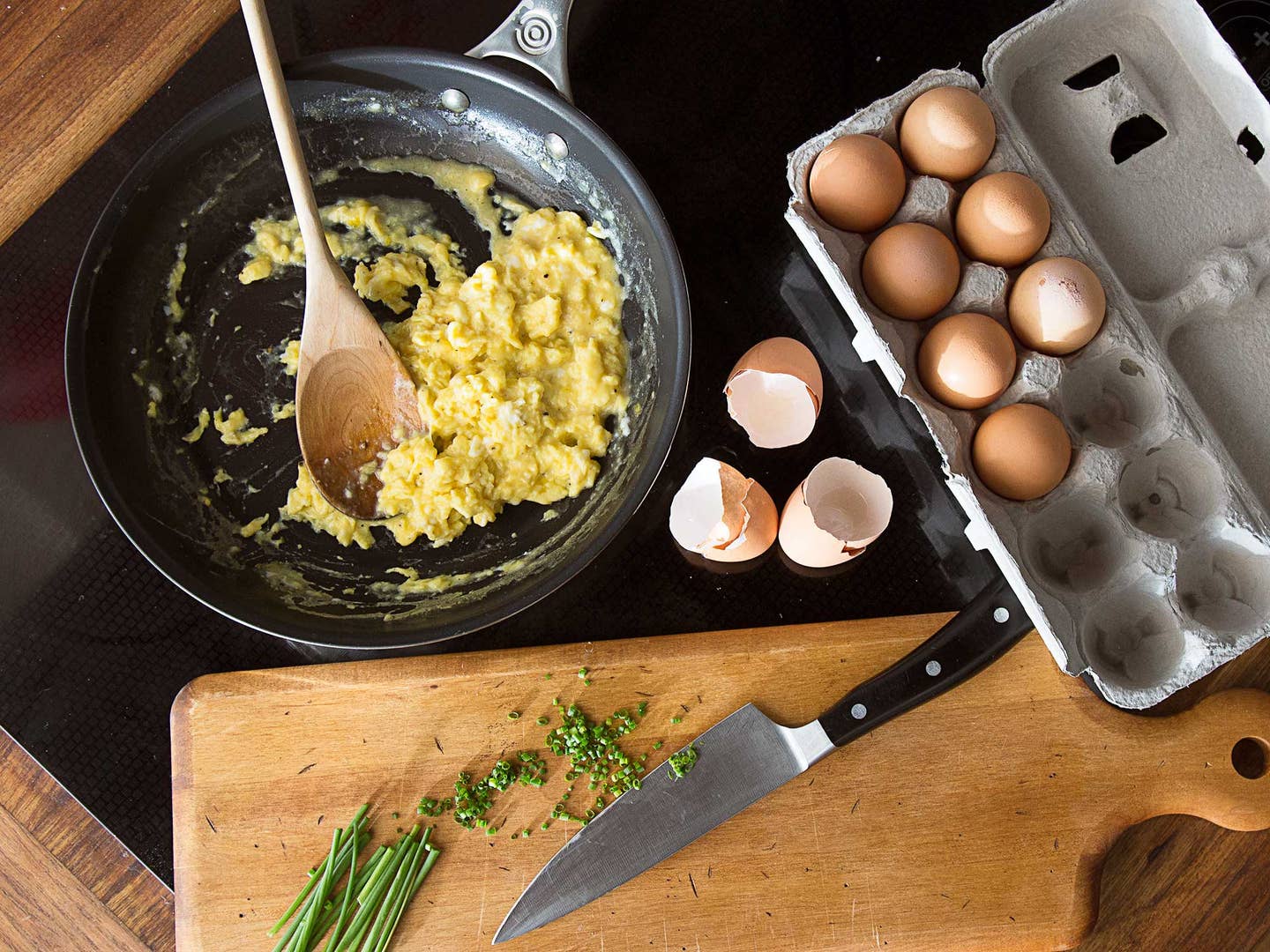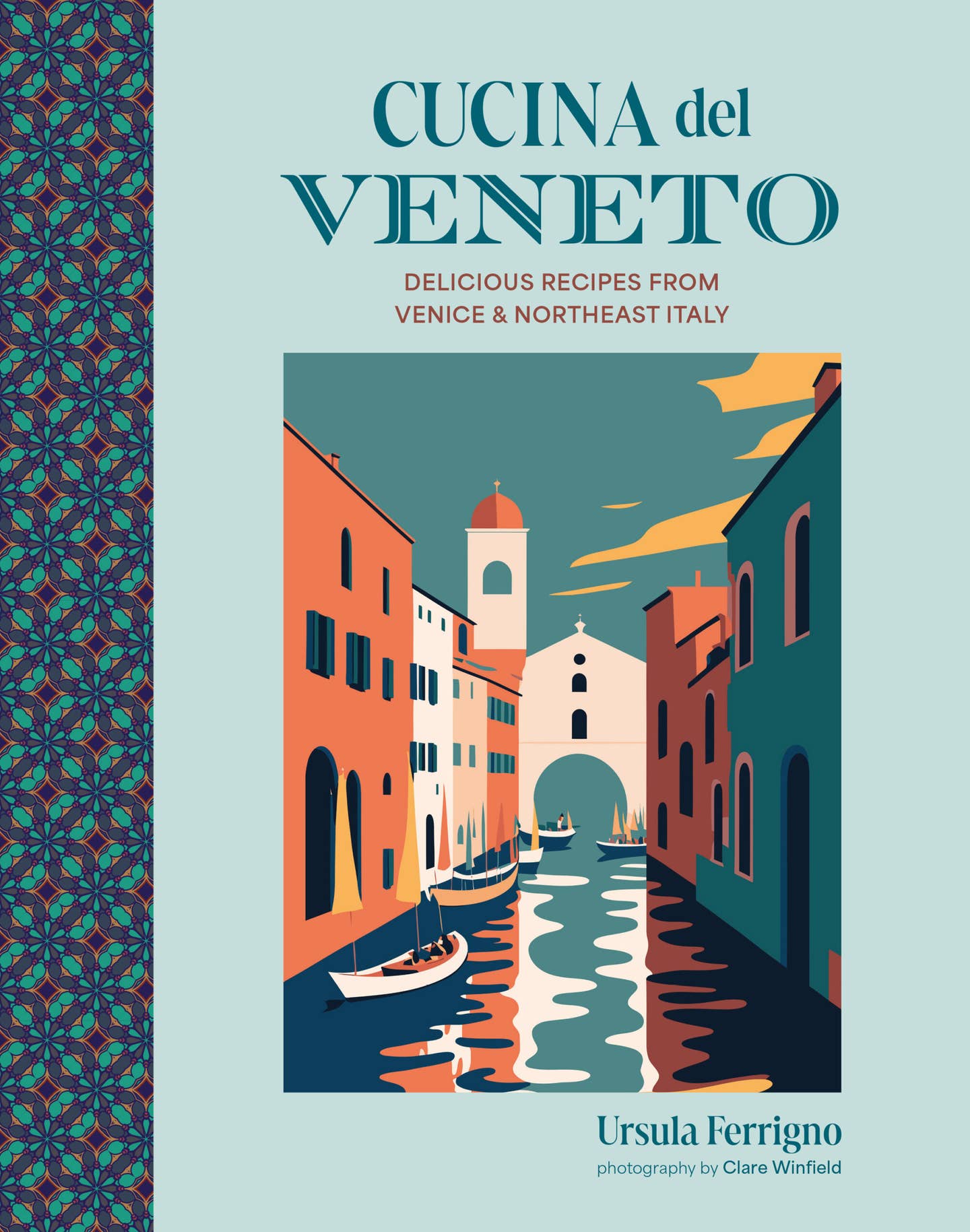
A Slightly NSFW Story About Eggs
Michael Ruhlman on why the egg is the most sexual food we have
There may be a thousand reasons to cherish eggs, but this, to me, is chief among them: They created the need for sexual intercourse (magazine decorum prevents me from using the more visceral term, which I prefer). As the food writer Harold McGee notes in his concise history of the egg in On Food and Cooking, single-celled organisms created their own DNA and split in two, but multicelled organisms, appearing about a billion years ago, required a more complex form of gene transfer. Thus, eggs and their need for fertilization. The egg, therefore, can be said to have come before the chicken, by billions of years.
Read more: How the Chicken Became Our National Bird »
But who among our two-legged upright ancestors actually ate the first egg? We can make a good guess: He was most likely the one who observed other animals eating bird eggs and not dying. Must be good to eat! And indeed they are, because eggs are in large measure composed of food designed for the early development of the embryo, containing a diversity of proteins and fats—everything, in fact, to create life itself. A good thing for all to eat. ⦿ Surely we've been cooking eggs since we mastered fire. And we can still embed an egg in the hot ashes from our hearth and roast it. But this is not the best way to cook an egg. The white turns brown from overcooking and the flavor is inferior to that of one gently cooked in hot water. Or an egg cooked…well, how many ways are there to cook an egg?
When I set out to write Ruhlman's Twenty, my manifesto on the things you need to know in order to cook, one of those 20 was how to prepare an egg. Master the egg and you increase your skills as a cook tenfold. But when I tried to isolate five recipes that illustrated the egg's importance, the mind boggled. The omelette. The custard. Mayonnaise. Meringue. Cake. I grew dizzy from anxiety.
I calmed and began, as all cooking begins, with the basics. You can cook an egg in its shell or out of its shell, I thought. If in its shell: You can cook it hard, medium, soft, mollet. If out: You can poach it (in water, in wine, in stock, in tomato sauce); you can bake it (uncovered, or shirred; or covered, coddled); and you can fry it (hard in smoking-hot oil so that the whites are crispy, or gently in butter so that the whites are delicate). But you can also blend it and cook it to completely different ends—scrambled, eggdrop soup, a frittata. Soon, again, the mind grew dizzy from the variety.
After running through myriad ways of cooking eggs whole, I moved on to cooking each part of the egg separately, for there are many uses for the yolk and many more for the white.
The white demanded its own flowchart: It will bind a scallop mousseline, clarify stock into consommé; it will give richness and body to a whiskey sour, set cream for a panna cotta. It can be whipped into a meringue, which itself has a host of uses: baked into crispy cookies, set with sugar for a nougat, poached for île flottante, used to lighten a mousse or to create an icing for a cake (which itself owes its airy crumb to meringue). Meringue can top a pie or be set with gelatin to make a marshmallow. And it goes on.
In the end, the book that came from my exploration of the egg contained at least 100 recipes, each one representing a distinct and separate use. And I hadn’t been exhaustive. But it had exhausted me. My editor suggested subtitling the book “An Exploration of the World’s Most Versatile Ingredient.” This was in no way hyperbole. It is the miracle ingredient and costs just pennies.
How though did the egg become such a powerhouse ingredient, the most versatile and essential center of the cook’s craft, or as one writer put it, “our atom of food”?
I would make a case that it began when we separated its two fundamental components and used each as a tool in one specific way: transforming the whites into a meringue, and using the yolk to turn liquid fat into a voluptuous sauce thick enough to stand a spoon in.
Much speculation surrounds the birth of the meringue, but the most likely account comes from food historian Alan Davidson, who notes that a rudimentary form of meringue was created in the 16th century with the use of a whisk of birch twigs, and that it first appeared in print in 1691. A century later it had become a favorite of Marie Antoinette. And it was Marie-Antoine Carême, in the early 19th century, who introduced the idea of using piping bags to shape the meringue, which could only happen once we learned to make it thick enough to hold a peak.
From here it was only a matter of cooks experimenting with it, adding sugar to sweeten it, to see how it behaved when poached, when baked, when folded with flour.
As far as using the yolk to emulsify goes, Larousse Gastronomique offers the hypothesis that it was the Duke of Richelieu, or more likely his chef, who pioneered that technique in 1756 after the Duke took the Port of Mahon. But the book also notes that a form of mayonnaise first appeared in print in 1806 and that Carême claimed that the name derived from the French word to stir, manier.
And yet the aïoli has been around since the first century A.D., written about by Pliny. A stable emulsion can indeed be made in a mortar using a pestle, so the unique properties of a yolk giving olive oil a thick, creamy consistency might have resulted from the vigorous smashing of garlic with a yolk and oil in a mortar. I’ve made aïoli this way, but it takes a hell of a lot of elbow grease and a heavy mortar.
When we learned to use the egg as a tool, it began its ascent to the multipurpose ingredient we know today, with still more uses and more techniques not yet dreamed of. It’s only in the last few decades, for instance, owing to the advent of sous vide, that we achieved a new form of soft-boiled egg and a new kind of sous-vide-in-a-bag omelette.
But the age-old dishes continue to satisfy us most. Shirred eggs on spinach with a dash of cream and sprinkle of Parmigiano-Reggiano. Egg yolk pasta. Cake with buttercream icing. Béarnaise sauce. A simple cheesy omelette. Crème brûlée. A thick quiche, ham and cheese suspended in a luxurious custard.
In discussing the latter with Thomas Keller, who taught me how to make the most ethereal quiche I know, he attempted to describe the pleasures of the textures of the custard center. “It’s so luxurious, so sensual,” he said. “It’s almost sexual.”
Indeed, he’d isolated it exactly. This marvel of the kitchen is the most sexual ingredient we have, all the stuff of life.
Make These Eggs
Egg and Cheese Soufflé
Its name derived from the French verb souffler, meaning “to breathe” or “to puff”, a soufflé’s pillowy top will naturally rise in the oven but slightly deflate just moments after removal. The eggy treat’s fleeting moment of perfection is one of the reasons the dish is handled so delicately by chefs and cherished so deeply by diners. This savory cheese version is courtesy of chef Daniel Skurnick of Le Coucou restaurant in New York City. Get the recipe for Egg and Cheese Soufflé »
And These Eggs
More Chicken and Eggs
Keep Reading
Continue to Next Story










